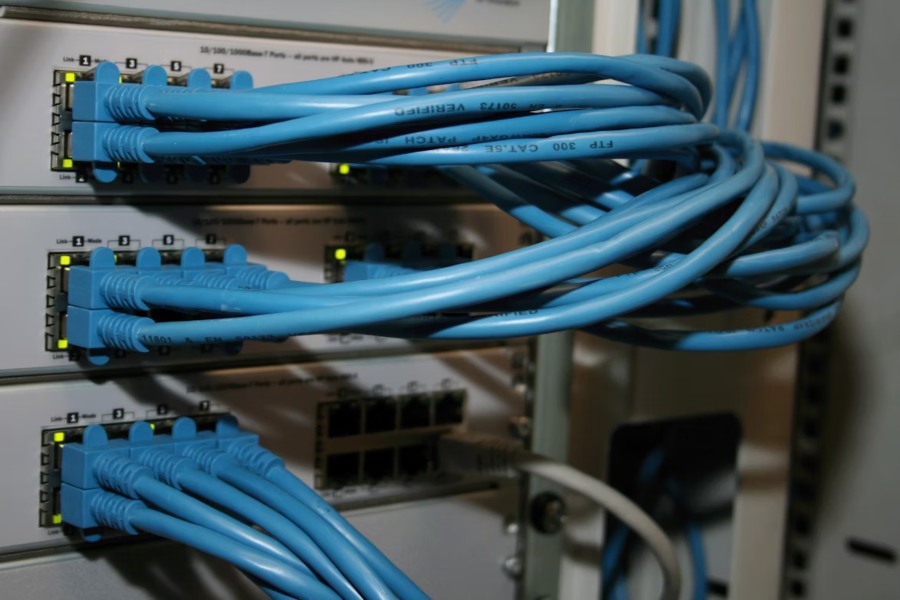
In the world of networking, understanding subnetting is crucial for efficient IP address management. One of the common subnet sizes used in small to mid-sized networks is the /27. But the big question many network engineers, IT students, and cybersecurity analysts often ask is: How many IP addresses are in a /27? The answer goes beyond just the number—it opens up a discussion on usable addresses, reserved addresses, subnetting logic, and practical applications.
If you’re configuring a network, allocating IPs to devices, or studying for a certification like CCNA, knowing how many IP addresses are in a /27 can streamline your planning and prevent address exhaustion. This guide will not only provide a clear number but also explain how to calculate it, what it means for your network architecture, and why it’s relevant in today’s digital infrastructure.
So, let’s dive into the comprehensive breakdown of how many IP addresses are in a /27, and why this question holds key importance in subnetting and IP address allocation strategies.
Quora-Style Answer: A /27 subnet contains 32 IP addresses in total, but only 30 are usable. The first is the network address, and the last is the broadcast address, which are reserved. So, for a /27, you get 30 usable IPs for devices.
What Does /27 Mean in Networking?
What a /27 subnet means begins with the basics of IP addressing and subnet masks. In IPv4, IP addresses consist of 32 bits, often represented in dotted decimal notation, such as 192.168.1.1. The “/27” refers to how many bits are used for the network portion of the address—in this case, 27 out of 32 bits.
This leaves only 5 bits for host addresses (32 total bits minus 27 bits for the network). The number of addresses available is calculated as 2^5 = 32. However, two of these addresses are reserved: one for the network identifier and one for the broadcast address. This gives you 30 usable IP addresses.
A /27 subnet mask is 255.255.255.224. That mask divides the address space into blocks of 32 addresses. It’s commonly used in small business LANs or specialized VLAN setups where 30 devices or fewer need IPs. Each block in the /27 range includes one network address, 30 usable host addresses, and one broadcast address.
For example, if your network starts at 192.168.1.0/27, your usable IPs range from 192.168.1.1 to 192.168.1.30, with 192.168.1.31 reserved for broadcasting. This structure ensures that devices within the subnet can communicate locally while preserving address space.
Subnetting into /27 blocks is a frequent strategy for maximizing address efficiency and enhancing security within segmented networks. It helps isolate departments or services, manage IP allocation better, and minimize congestion.
As IP addresses become scarce and efficient use of address space becomes more critical, understanding the structure and implications of subnets like /27 is more important than ever.
How to Calculate How Many IP Addresses Are in a /27 Subnet
to calculate how many IP addresses are in a /27 subnet is essential for efficient network design. Here’s a simple breakdown of the process.
Subnet Bits in a /27 Network
When dealing with a /27 subnet, the “27” refers to the number of bits allocated to the network portion of the IP address. Since IPv4 addresses are 32 bits long, that leaves 5 bits available for host addresses. These 5 bits determine how many individual IP addresses can be assigned within that subnet.
Formula for Calculating IP Addresses
To calculate the total number of IP addresses in any subnet, you use the formula 2^n, where n is the number of bits remaining for host addresses. For a /27 subnet, it becomes 2^5 = 32 total IP addresses. This includes all possible combinations within the 5 host bits.
Determining Usable IPs in a /27
Although a /27 provides 32 total IP addresses, not all of them are usable for hosts. Two addresses in each subnet are reserved:
- The first address is used as the network identifier
- The last address is reserved as the broadcast address
This means the number of usable IP addresses in a /27 subnet is 30.
The Subnet Mask for a /27
The subnet mask that corresponds to a /27 prefix is 255.255.255.224. This mask clearly defines the range of IP addresses that fall within the subnet and helps routers and devices know where the subnet starts and ends.
Real-World Example of a /27 Subnet
Let’s say you’re working with the subnet 10.0.0.0/27. The addresses in this subnet range from 10.0.0.0 to 10.0.0.31. Of these, 10.0.0.1 to 10.0.0.30 are usable for devices, while 10.0.0.0 is the network address and 10.0.0.31 is the broadcast address.
This structure ensures efficient IP management, especially in smaller networks where space must be conserved.
Benefits of Using a /27 Subnet
A /27 subnet offers several practical advantages, especially in environments where efficient IP address management and network segmentation are priorities. It’s commonly used in small to medium-sized networks and proves especially useful in scenarios involving limited device counts or security-focused configurations.
- Efficient IP Allocation
With exactly 30 usable IP addresses, a /27 subnet is perfect for small LANs, isolated device groups, or specific services like printers or VoIP phones. It ensures minimal address waste. - Network Segmentation
Creating multiple /27 subnets allows you to logically separate departments, projects, or services within a larger network. This improves organization and control. - Improved Security
Smaller subnets limit the number of devices that can interact, reducing exposure and making it easier to apply firewall rules and access controls. - Reduced Broadcast Traffic
Fewer hosts in a subnet means fewer broadcast messages, which leads to less congestion and better performance across the network. - Simplified Troubleshooting
With fewer devices per subnet, network administrators can isolate and resolve issues more efficiently, reducing downtime and complexity.
Using a /27 subnet is a smart way to balance performance, control, and scalability in structured networking environments.
When Should You Use a /27 Subnet?
When to use a /27 subnet involves considering both device count and network behavior. If you’re managing a small office with fewer than 30 devices that need unique IPs, a /27 fits perfectly. It ensures that no address space is wasted. For example, if you run a VLAN for printers or VoIP phones, a /27 keeps them neatly isolated from the rest of your LAN.
A /27 is also helpful in managing IP address fragmentation. In cloud deployments or containerized applications, assigning a /27 to each instance ensures resource isolation while avoiding address exhaustion.
It’s not just about device count, though. A /27 can also serve to enforce security boundaries. For example, isolating development from production environments. Smaller subnets naturally limit exposure and potential attack surfaces.
Network admins often prefer /27 blocks when creating static IP pools for things like DHCP reservations or firewall policies. These subnets allow for specific rule application without interfering with broader networks.
If your ISP provides a public /27 block, understanding how to route and protect those IPs is crucial. Proper NAT, firewalling, and DNS configurations are necessary to secure such setups.
Common Misconceptions About How Many IP Addresses in a /27
There are several misunderstandings surrounding how many IP addresses are in a /27 subnet. Let’s clear up the most common misconceptions below.
Misconception 1: You Can Use All 32 IPs
Only 30 IPs are usable. The first is the network address, and the last is for broadcast.
Misconception 2: Subnetting is Too Complex
With tools like subnet calculators and cheat sheets, /27 calculations are manageable.
Misconception 3: /27 Subnets Are Rarely Used
In reality, they’re popular in both private and public IP allocations.
Misconception 4: You Can Mix Subnet Sizes Easily
Mixing /27 with other sizes requires routing knowledge and careful planning.
Misconception 5: IPv6 Makes This Obsolete
While IPv6 has more address space, IPv4 and /or 27 subnets are still widely used.
Conclusion
Knowing exactly how many IP addresses are in a /27 allows for smarter network design, cost-efficient IP utilization, and stronger security segmentation. Whether you’re an IT pro designing VLANs or a student mastering subnetting for certification exams, the ability to break down and apply the concept of /27 subnetting is essential. Remember:/27 gives you 30 usable IP addresses, and knowing how to manage them means unlocking efficiency and control within your digital environment.
FAQ’s
What is the total number of IP addresses in a /27?
A /27 subnet provides 32 total IP addresses, which includes all host, network, and broadcast addresses within the defined range.
How many usable IP addresses in a /27 subnet?
Out of the 32 total addresses, 30 are usable for devices. The remaining two are reserved for the network ID and the broadcast address.
What is the subnet mask for a /27?
The subnet mask for a /27 is 255.255.255.224, which defines the block size and IP range used within the network.
Can I use a /27 subnet for a home network?
Yes, a /27 subnet works well in home networks that require more than 5–10 devices and need basic segmentation or better performance.
Is/27 used in IPv6?
No, the concept of a /27 is specific to IPv4 addressing. IPv6 uses a different format and offers significantly more address space.





